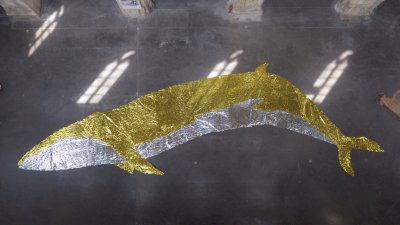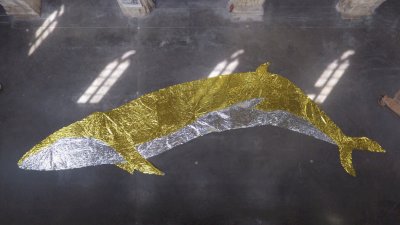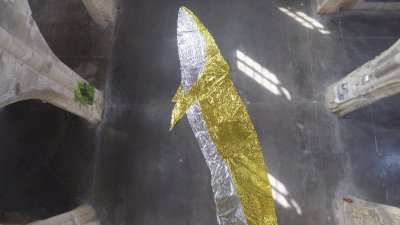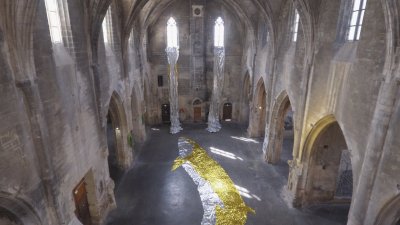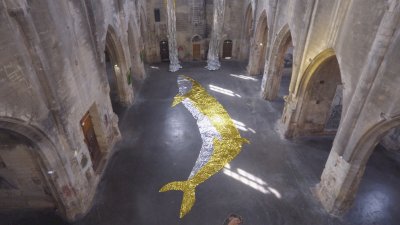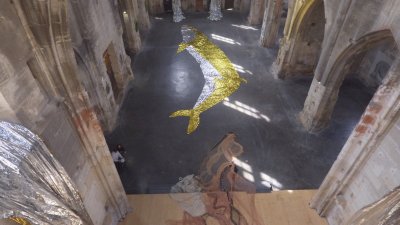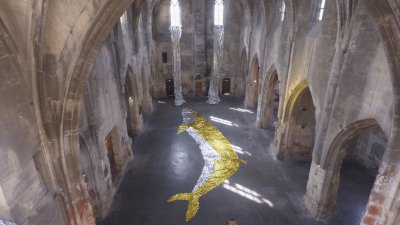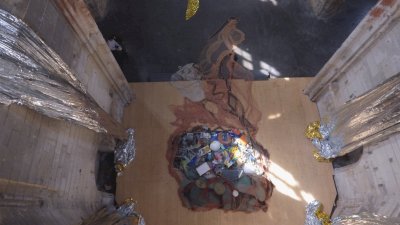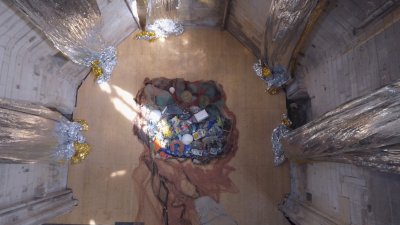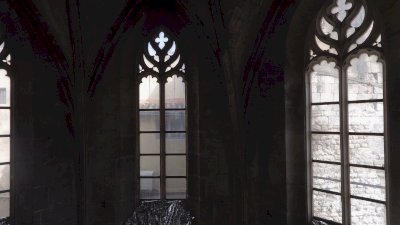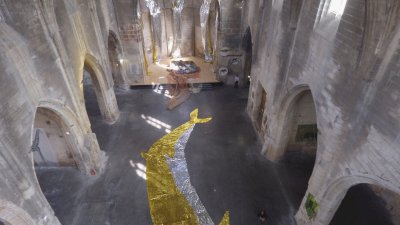A coproduction by the town of arles and the flair art gallery
The Eglise des Frères-Prêcheurs hosted a graphic safari of fawns and great apes in its lateral chapels. “They pose like trophies with skin made of ink and paper. Their stares are fraternal, yes that’s it. It’s what I have felt since childhood: we are brothers and we live in the same house – planet Earth. They sniff us and see us, then keep still, spy on us, ponder and stare at us… I thought to myself that perhaps, without knowing it, I was one of their own!”
De Profundis: a fin whale measuring 22 m x 5 m and waterfalls 14 m high made of survival blankets were set up in the nave and the choir of the Eglise des Frères-Prêcheurs.
The plastic waste of De Profundis attests to the contamination of the Mediterranean Sea. They were collected on beaches by various activists for the protection of our coastline, including Ecodunes, WeOcean, the C’est du propre campaign in the town of Grau du Roi, the Seaquarium Marine Institute, the Association for Sustainable Development and Ecology in the Camargue region, the Center for Research and Preservation of Mediterranean Sea Turtles, the Association for Cetacean Preservation, Souffleurs d'écumes and the Roger Delagnes Des Saintes Maries de la Mer primary school.
This activity is part of an innovative project known as ReSeaclons, led by the Seaquarium Marine Institute, out of a creation of the only circular economic network on marine plastic waste recycling. For the first time in the history of plastics, a mix of different types of unsorted plastic waste will be recycled together by the Trivéo company.
The waste used for De Profundis will be recycled by Trivéo at the end of the exhibition.
These Grandeur Nature artworks pay homage to species and spaces under threat.
See the exhibition on the Arles agenda website
Discover the exhibition on the FLAIR art gallery website
- Hervé Schiavetti, mayor of Arles
- Christophe Lespilette, director of the cultural department
- Claudie Durand, deputy associate on culture
- Valérie Antonetti, in charge of broadcasting and artist support
- Claire Nys, task officer in the cultural department
- and ll the teams that contributed to the exhibition
- Isabelle Wisniak,director of the FLAIR art gallery and her dog, Joy
- Olivier Adam, bio-acoustician specialized in cetaceans, for his recording of rorquals, narwhals, humpback whales, sperm whales, pilot whales, killer whales, belugas and for his drone photographs and videos.
- Xavier Murard, consultant on marine circular economy and the fishermen of the Saintes for collecting plastic waste in the Mediterranean Sea as well as in fishnets.
-
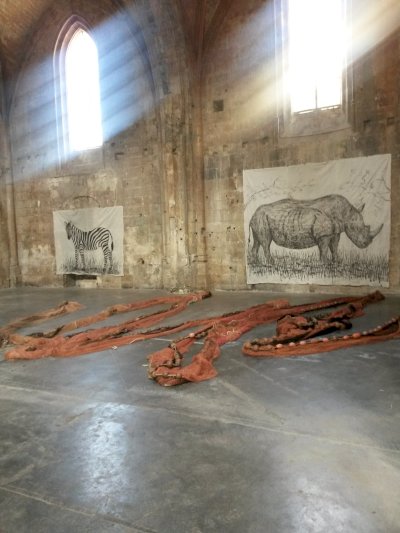
Frères-Prêcheurs church
& FLAIR galerie
ArlesClick to enlarge -
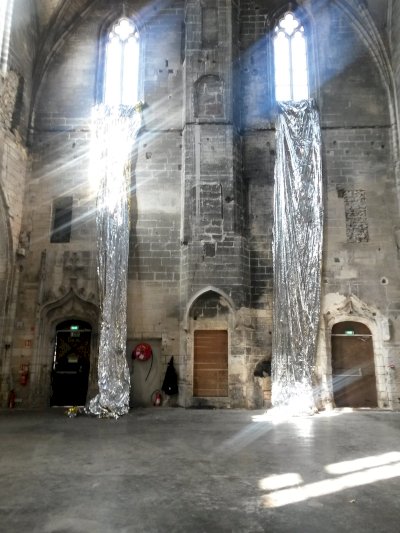
Frères-Prêcheurs church
& FLAIR galerie
ArlesClick to enlarge -
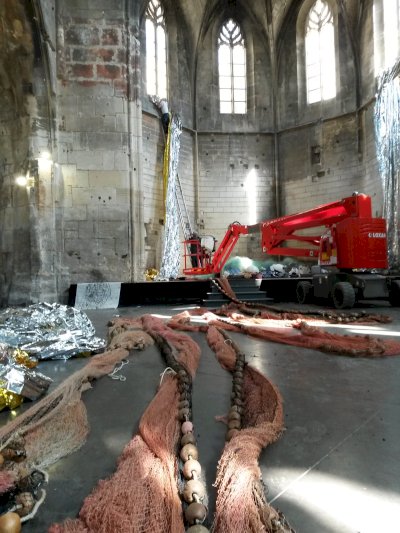
Frères-Prêcheurs church
& FLAIR galerie
ArlesClick to enlarge -
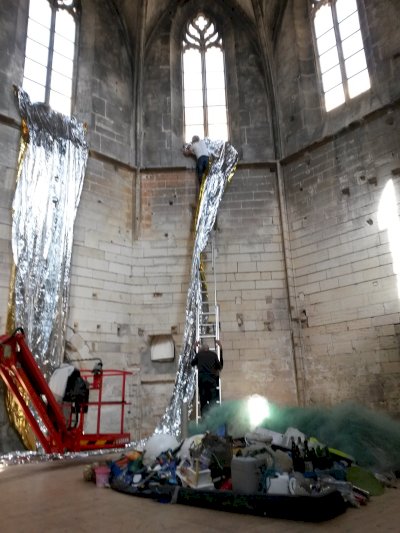
Frères-Prêcheurs church
& FLAIR galerie
ArlesClick to enlarge -
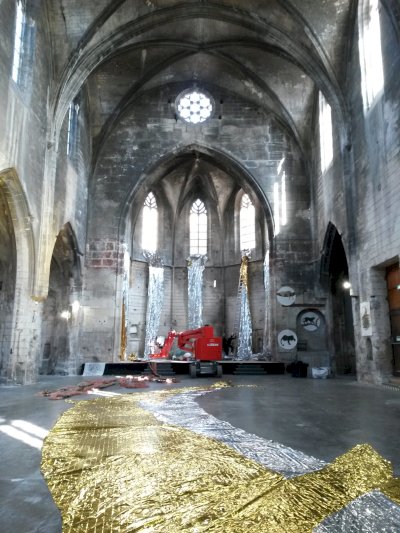
Frères-Prêcheurs church
& FLAIR galerie
ArlesClick to enlarge -
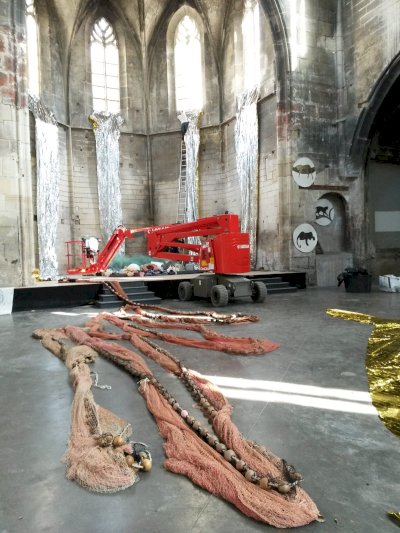
Frères-Prêcheurs church
& FLAIR galerie
ArlesClick to enlarge -
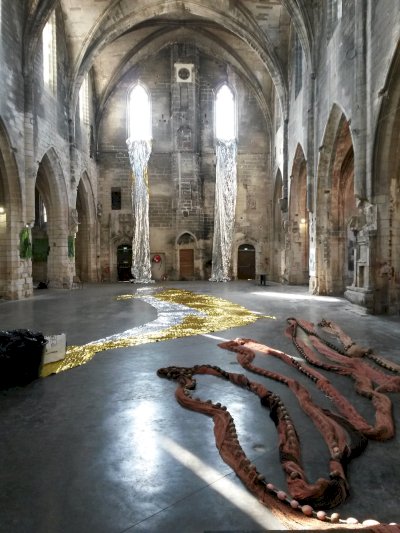
Frères-Prêcheurs church
& FLAIR galerie
ArlesClick to enlarge -
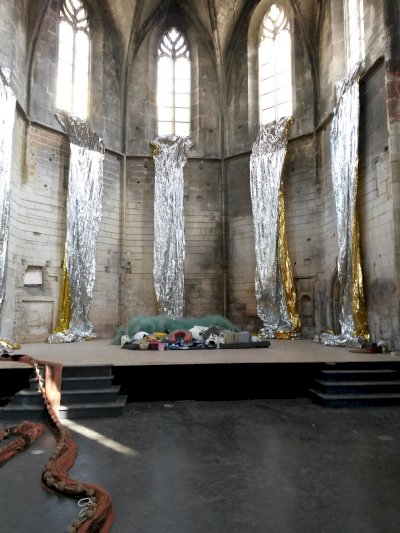
Frères-Prêcheurs church
& FLAIR galerie
ArlesClick to enlarge -
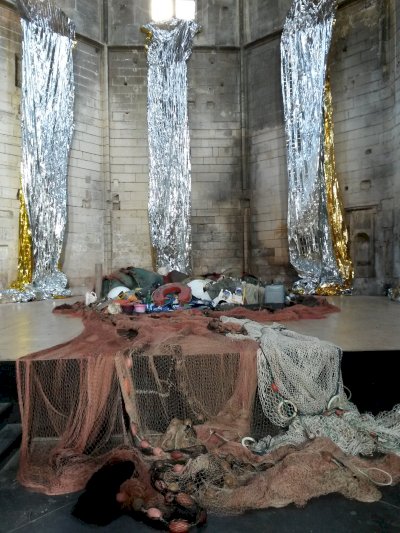
Frères-Prêcheurs church
& FLAIR galerie
ArlesClick to enlarge -
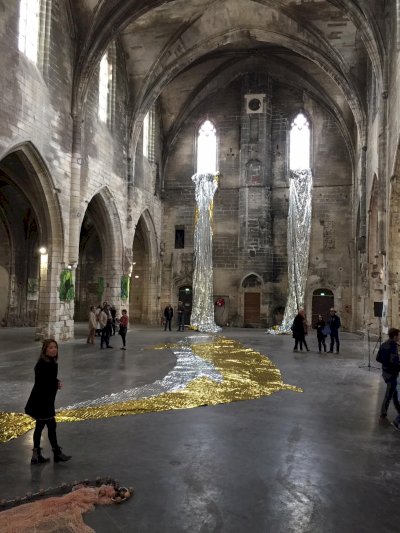
Frères-Prêcheurs church
& FLAIR galerie
ArlesClick to enlarge -
Frères-Prêcheurs church
& FLAIR galerie
ArlesClick to enlarge -
Frères-Prêcheurs church
& FLAIR galerie
ArlesClick to enlarge -
Frères-Prêcheurs church
& FLAIR galerie
ArlesClick to enlarge -
Frères-Prêcheurs church
& FLAIR galerie
ArlesClick to enlarge -
Frères-Prêcheurs church
& FLAIR galerie
ArlesClick to enlarge -
Frères-Prêcheurs church
& FLAIR galerie
ArlesClick to enlarge -
Frères-Prêcheurs church
& FLAIR galerie
ArlesClick to enlarge -
Frères-Prêcheurs church
& FLAIR galerie
ArlesClick to enlarge -
Frères-Prêcheurs church
& FLAIR galerie
ArlesClick to enlarge -
Frères-Prêcheurs church
& FLAIR galerie
ArlesClick to enlarge -
Frères-Prêcheurs church
& FLAIR galerie
ArlesClick to enlarge
desnoettes@gmail.com
+33 6 63 79 53 71
Solenn de la Croix:
+33 6 67 02 05 26
solenn.dlcroix@gmail.com
